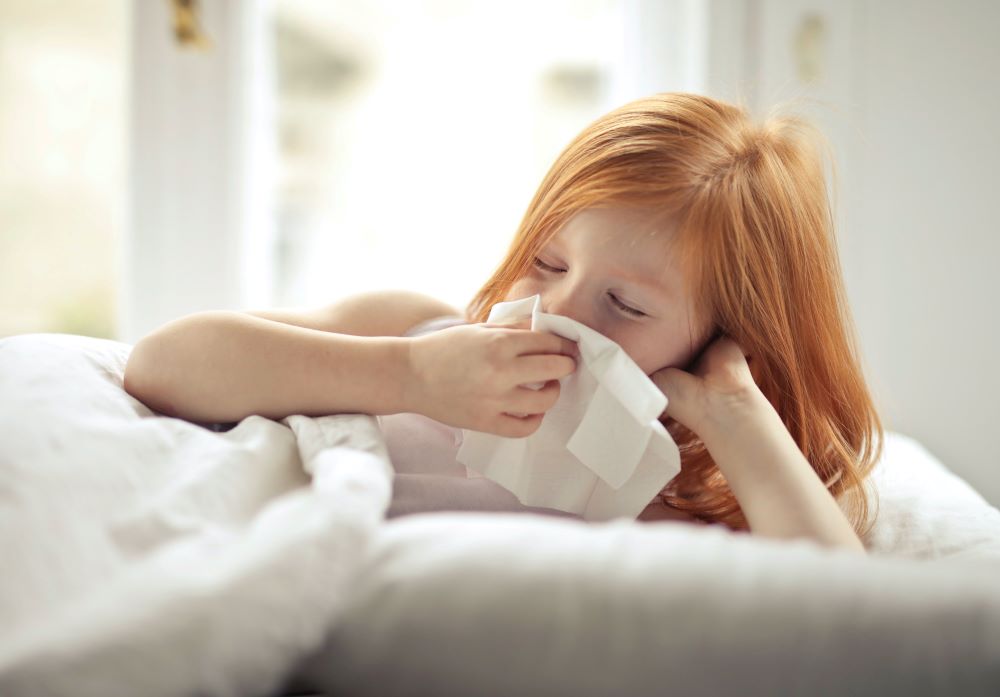Health officials warn of a large number of pneumonia cases among Ohio’s youth.
Ohio is grappling with a notable upswing in pediatric pneumonia cases among children, according to health officials. Since August, a total of 145 cases have been reported, with most children managing to recover at home. The infections, caused by various common viruses and bacteria, have prompted heightened vigilance among health authorities.
Dr. Mandy Cohen, head of the Centers for Disease Control and Prevention (CDC), highlighted the increasing prevalence of influenza (flu) and respiratory syncytial virus (RSV) infections. RSV, known for causing mild cold-like symptoms, has led to a surge in emergency department visits in states like Georgia, Texas, and others in the past month. Dr. Cohen anticipates that RSV infections might peak in the coming week.
While many children with pneumonia in Ohio recuperated without hospitalization, health officials underscore the importance of monitoring symptoms closely. Pneumonia, often caused by various pathogens, demands attention due to its potential severity, especially in younger age groups.
The flu season is also gaining momentum, with the CDC reporting elevated levels of flu-like illnesses in 11 states, predominantly in the South and Southwest. Dr. Cohen emphasized the need for preventative measures, including vaccination, to curb the spread of influenza.
The surge in pediatric pneumonia cases underscores the ongoing challenges faced by healthcare systems in managing respiratory infections, particularly amid the co-circulation of RSV and influenza. While RSV typically causes mild symptoms, it poses a significant risk to infants and older individuals, necessitating vigilant monitoring and early intervention.

Pediatric pneumonia is an inflammatory condition affecting the lungs in children, primarily caused by infectious agents such as bacteria, viruses, or fungi. It is characterized by inflammation of the air sacs in one or both lungs, leading to the accumulation of fluid and pus. This can impair the lungs’ ability to oxygenate the blood efficiently, resulting in respiratory difficulties.
Common symptoms of pediatric pneumonia include persistent cough, often producing phlegm, along with rapid or difficult breathing. Children with pneumonia may experience chest pain, wheezing, and a high fever. Additionally, fatigue, lethargy, and a reduced appetite are typical signs.
In infants and younger children, the symptoms might manifest differently, including irritability, difficulty feeding, and grunting during breathing. The severity of symptoms can vary, ranging from mild to severe, and may be influenced by the causative agent and the overall health of the child.
Prompt recognition and medical intervention are crucial for managing pediatric pneumonia effectively. If a child exhibits symptom such as persistent cough, breathing difficulties, or high fever, seeking medical attention promptly is essential. Healthcare providers may recommend diagnostic tests, such as chest X-rays, to confirm the diagnosis and determine the appropriate course of treatment.
Preventive measures, including routine vaccinations, good respiratory hygiene practices, and avoiding exposure to known respiratory pathogens, play a vital role in reducing the risk of pediatric pneumonia. Timely medical care and adherence to prescribed treatments are paramount in ensuring the well-being and recovery of children affected by pneumonia.
Health officials are closely monitoring the situation, urging parents to be aware of symptoms related to respiratory infections, such as persistent cough, difficulty breathing, and fever. Timely medical attention is crucial in ensuring the well-being of affected children, and health authorities emphasize the importance of preventive measures, including vaccination against influenza and maintaining good respiratory hygiene practices.
As winter progresses and respiratory viruses continue to circulate, public health efforts are focused on mitigating the impact of these infections on vulnerable populations. The collaboration between healthcare providers and communities remains instrumental in navigating through the challenges posed by the simultaneous occurrence of pneumonia, RSV, and flu cases.
Sources:
Pneumonia cases in kids rise in Ohio: Health officials
‘Extremely high’ number of pneumonia cases strike kids in Ohio county


Join the conversation!